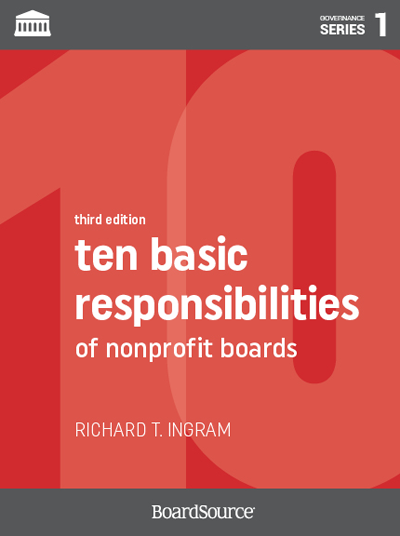Leading Nonprofit Agency: Assisting Charities and Organizations Achieve Their Objectives
Leading Nonprofit Agency: Assisting Charities and Organizations Achieve Their Objectives
Blog Article
Analyzing the Difficulties and Opportunities Encountered by a Nonprofit Agency in Getting Its Mission and Goals in Today's Society
In the present landscape, not-for-profit agencies are browsing an intricate selection of obstacles, such as changing funding resources and enhanced competitors for contributor involvement. These difficulties, while discouraging, can likewise open opportunities for innovation and collaboration that might boost their capability to fulfill objectives. By taking a look at just how nonprofits can tactically adapt to these dynamics, we can reveal not just the techniques they utilize to conquer challenges however additionally the untapped possibility that lies within their operational structures. What remains to be seen is exactly how these companies will certainly harness these possibilities to redefine their influence in culture.
Present Landscape for Nonprofits
The current landscape for nonprofits is identified by a complicated interplay of developing financing designs, enhanced competition for donor interest, and increasing needs for accountability and openness. Nonprofit companies are increasingly expanding their income streams to consist of grants, specific donations, business sponsorships, and social enterprise efforts. This change shows a critical reaction to typical funding resources coming to be much more uncertain and competitive.
Furthermore, the surge of data systems has transformed just how nonprofits engage with potential contributors. Social media site, crowdfunding, and online campaigns are currently important devices for reaching wider target markets, yet they additionally heighten competitors amongst companies trying restricted resources. In this atmosphere, nonprofits have to refine their messaging to efficiently catch the rate of interest and dedication of fans.
In addition, stakeholders are demanding greater transparency concerning exactly how funds are designated and the quantifiable effect of not-for-profit tasks. This pattern requires that companies embrace durable responsibility procedures, consisting of in-depth coverage and examination frameworks, to demonstrate their effectiveness. Consequently, the nonprofit market is navigating a landscape that calls for cutting-edge reasoning, calculated versatility, and a commitment to ethical practices in order to grow among these vibrant difficulties and opportunities.
Key Obstacles Run Into
Navigating the nonprofit field offers a myriad of difficulties that can hinder business efficiency and sustainability. One of one of the most important issues is the dependence on inconsistent funding resources. Nonprofits typically depend upon grants, contributions, and government assistance, which can vary considerably, bring about monetary instability and difficulties in lasting planning.

Team retention and volunteer involvement pose more obstacles, as many nonprofits battle to supply affordable wages and advantages. The high turn over rates can disrupt organizational continuity and influence solution shipment.
Furthermore, adapting to technological improvements and electronic makeover remains a hurdle for numerous nonprofits. A lack of resources and competence can stop organizations from leveraging innovation efficiently, therefore discover this restricting their outreach and effectiveness.
Eventually, these challenges require nonprofits to employ strategic planning and innovative strategies to preserve their mission and make certain sustainability in a complicated landscape. nonprofit agency.
Emerging Opportunities
Just how can nonprofits harness emerging possibilities to improve their impact? In today's rapidly developing landscape, nonprofits have the opportunity to utilize technical advancements, moving social characteristics, and raised public recognition to advance their objectives.
Furthermore, partnership with organizations and various other sectors is becoming more common, offering nonprofits with accessibility to sources, knowledge, and cutting-edge remedies. Collaborations can enhance efforts, drive area engagement, and produce lasting effects. Additionally, the expanding emphasis on corporate social obligation uses nonprofits opportunities to straighten navigate to this website with companies that focus on social effect, getting financial backing and shared objectives.
The increasing emphasis on data-driven decision-making enables nonprofits to better assess their results and programs, improving liability and effectiveness. By accepting these arising chances, nonprofits can not only strengthen their operational capabilities however likewise broaden their influence in dealing with pressing social concerns, inevitably driving purposeful modification in their areas.
Approaches for Adjustment
Adapting to a frequently altering atmosphere is important for nonprofits intending to maintain their impact and efficiency. To browse the complexities of modern-day society, nonprofits should execute calculated strategies that enhance their resilience and responsiveness.
One trick technique entails leveraging innovation to enhance operations and broaden outreach. By making use of electronic platforms, nonprofits can enhance communication with stakeholders, improve fundraising initiatives, and boost recognition of their objective. In addition, adopting data-driven decision-making techniques allows companies to assess their programs' performance and adjust strategies based upon empirical evidence.
Cooperation with other companies-- both nonprofit and for-profit-- can promote source sharing and technology. nonprofit agency. Partnerships can result in shared know-how, funding opportunities, and increased networks, inevitably intensifying the cumulative effect
Furthermore, growing a culture of adaptability within the company is critical. Educating personnel to welcome modification and urging innovative analytic can empower teams to react successfully to arising challenges.
Situation Studies and Success Stories
Successful adaptation methods in the not-for-profit industry can usually be highlighted with compelling study and success stories. One remarkable instance is the "Feeding America" network, which changed its operations during the COVID-19 pandemic. By leveraging innovation and area partnerships, the company scaled its food circulation efforts to satisfy the unprecedented demand, serving numerous family members who encountered food insecurity.
Another impactful case is the "Boys & Girls Clubs of America," which adjusted its programs to a digital style throughout lockdowns. By introducing on the internet mentorship and appealing tasks, they maintained connections with youth across the country, making certain ongoing support and growth despite the obstacles postured by social distancing.
Likewise, the "Globe Wildlife Fund" has efficiently integrated community-based preservation strategies, empowering website link neighborhood populaces to participate in wildlife defense initiatives. This strategy not just promotes area ownership however additionally boosts environmental sustainability.
These study highlight exactly how nonprofits are not only dealing with prompt challenges but are also producing long-term options that straighten with their missions. By sharing such success tales, organizations can influence others to adjust and introduce, eventually driving favorable adjustment within their neighborhoods.

Verdict
In conclusion, not-for-profit companies today navigate a complicated landscape defined by financial instability, competitors, and workforce challenges. Eventually, addressing both obstacles and opportunities will be essential for nonprofits to satisfy their goals and attain long-term influence in society.
In the existing landscape, nonprofit companies are navigating an intricate range of obstacles, such as rising and fall funding sources and boosted competition for contributor engagement. The nonprofit sector is navigating a landscape that needs ingenious reasoning, strategic adaptability, and a dedication to honest practices in order to grow amidst these vibrant difficulties and possibilities.
Navigating the not-for-profit market presents a myriad of challenges that can prevent organizational performance and sustainability.In final thought, not-for-profit companies today navigate a complicated landscape identified by monetary instability, competitors, and workforce obstacles. Eventually, dealing with both chances and obstacles will be critical for nonprofits to satisfy their objectives and achieve enduring impact in culture.
Report this page